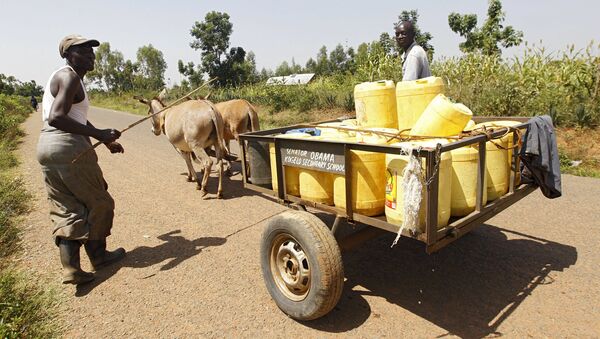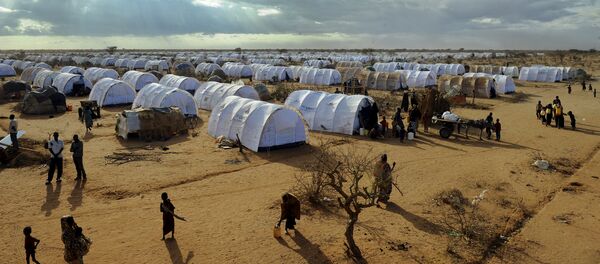With up to half the country affected by the drought that has spread across East Africa, the hungriest are resorting to eating bugs and toxic wild foods. Twenty-three of the country's 47 counties are facing drought conditions, and these numbers will rise, Secretary General of Kenya's Red Cross Society Abbas Gullet said.
"Indications are that the April 2017 long rains may not be sufficient. It is therefore our fundamental responsibility to assist the central and county governments to quickly respond to the plight of the affected communities," he added.
Some 2.7 million people could face starvation without aid, the Red Cross warned.
The drought is blamed on last year's El Nino, which limited the 2016 spring and fall rains. This year's unusually high temperatures are only exacerbating the problem.
But El Nino is not the only factor: Kenya has been facing encroaching desertification for some time now, Hilda Mukui, former head of agriculture in Kenya's Ministry of Agriculture, explained.
"We are now facing severe effects of desertification because we are cutting down more trees than we can plant," she told Inter Press Service (ISP). Despite a development plan, Vision 2030, that calls for a billion trees to be planted in the country before 2030, little has been done, she said.
Citing a survey by the Kenya Forest Service, ISP reports that an estimated 25 percent of the Mau Forest Complex, Kenya's largest water catchment area, has been lost due to human activity.
The United Nations Convention to Combat Desertification (UNCCD), which works in Kenya and other countries facing desertification, has been pushing for the restoration of degraded agricultural land, including through tree planting. At an October conference in Nairobi, the organization reiterated its goal to restore at least 5 million hectares of land in Kenya.
The country must ensure over the next decade that it is not losing more land than it gains, the UNCCD warned. According to the UN, at least 10.8 million Kenyans (out of a population of 44 million) live in degraded agricultural areas. Eighty percent of Kenya's land is classified as arid or semi-arid, and vulnerable to environmental shocks, like drought. Those living in these areas, with poor soil and dried rivers, are among the most at risk for food insecurity.
In the meantime, families desperate for food in drought-hit counties run the risk of filling their bellies with toxic wild plants and tubers. Schools and pre-schools have closed so children can help their families search for water.
"In most of these counties, mothers are feeding their children wild fruits and tubers. They boil them for at least 12 hours, believing that this will remove the poison they carry," Mukui said.
Alidema Galgalo, who lives in drought-stricken Marsabit County, told Kenya's Red Cross he has lost 80 of the 115 head of livestock he owned prior to the drought.
"I have lost 80 of my livestock and even the 35 left are weak," Galgalo said. "At this rate, I doubt if they will survive past the month of February."
Kenya is not the only country suffering. Nearly half the population of Somalia is food insecure, and the UN is warning of the possibility of famine in parts of the country. Crises are also simmering in Nigeria, South Sudan, Somalia, Uganda, Kenya, Chad, Madagascar, Malawi, the Central African Republic, Burundi, Cameroon and elsewhere in southern Africa, the Los Angeles Times reported last month, with the numbers of those needing food aid in those countries skyrocketing.
Kenyan President Uhuru Kenyatta said the country had allocated $105 million to tackled the drought, but appealed for international support.
"The Government intends to enhance the interventions including doubling of food rations and cash transfers among other measures," he said in a statement reported by Reuters.
West and southern African nations, also reeling from drought, are now doing battle with destructive fall armyworms, which have attacked the staple maize crops. Kenya and other East African nations are now bracing for their own potential encounters with the invasive pest.





